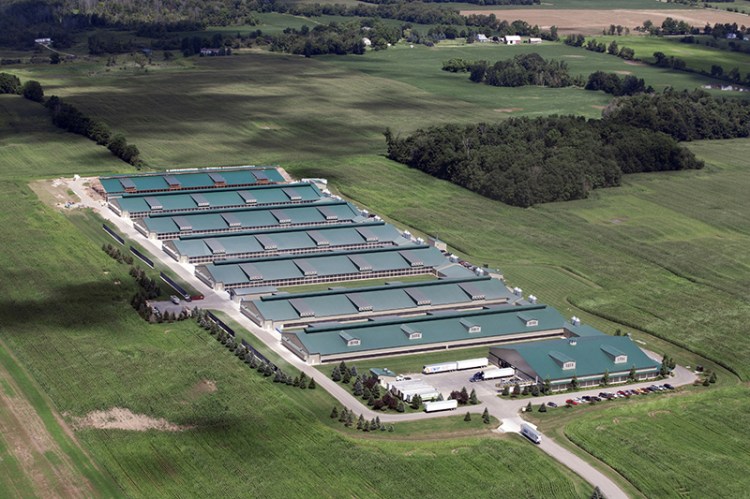SARANAC, Mich. — Of all the cartons of organic eggs sold in the United States, more than 1 in 10 originates from a complex here that houses more than 1.6 million hens.
They’re sold under the Eggland’s Best label.
“The entire process is organic,” Greg Herbruck, president of Herbruck’s Poultry Ranch says in a promotional video.
Details of the operation are not publicly available, however, and he declined a reporter’s request for a visit, citing the possibility that it could infect the flock with disease, such as avian flu.
But according to people familiar with the operation, as well as a building plan, each of the nine long rectangular barns at Herbruck’s holds about 180,000 birds, or more than three hens per square foot of floor space, according to sources who spoke on condition of anonymity.
None of the birds is allowed to set foot outside, they said.
Under USDA requirements, organic livestock are supposed to have access to the “outdoors,” get “direct sunlight” and “fresh air.” The rules prohibit “continuous total confinement of any animal indoors.”
Organic livestock are supposed to be able to engage in their “natural behavior,” and for chickens, that means foraging on the ground for food, dust-bathing and even short flights.
Katherine Paul of the Organic Consumers Association said the Herbruck’s operation betrays consumer expectations.
“This is not at all what consumers expect of an organic farm,” she said about Herbruck’s.
“It’s damaging to the image of the entire industry. People will wonder, ‘Why the hell am I paying more for this?'” she said.
In addition, Paul said, allowing the large egg operations to confine their hens to the barn creates an unfair advantage when hundreds of smaller family organic operations let the hens out and sustain higher costs.
The USDA allows Herbruck’s and other large operations to sell their eggs as organic because officials have interpreted the word “outdoors” in such a way that farms that confine their hens to barns but add “porches” are deemed eligible for the valuable “USDA Organic” label. The porches are typically walled-in areas with a roof, hard floors and screening on one side.
As for how densely organic livestock may live, the USDA rules do not set an explicit minimum of space per bird, although the regulations do say henhouses should accommodate the “natural behavior” of the animals.
Send questions/comments to the editors.



Success. Please wait for the page to reload. If the page does not reload within 5 seconds, please refresh the page.
Enter your email and password to access comments.
Hi, to comment on stories you must . This profile is in addition to your subscription and website login.
Already have a commenting profile? .
Invalid username/password.
Please check your email to confirm and complete your registration.
Only subscribers are eligible to post comments. Please subscribe or login first for digital access. Here’s why.
Use the form below to reset your password. When you've submitted your account email, we will send an email with a reset code.